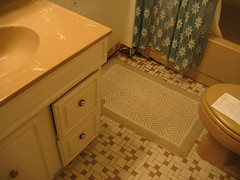 |
| Chew (Photo credit: quinn.anya) |
There
are so may things in this world that can be detrimental to our health
that it seems like we should always be on the look out for risks, but
sometimes they come in the unexpected places. For example, recently
there have been a spate of recalls of children's toys due to
dangerous levels of lead paint despite its use being discontinued in
the US for many years. Unfortunately, because we live in a global
market, often our goods are produced in other countries and that
means that they may not meet the standards we hold in regards to
safety.
If
toys contain lead or lead paint then they can be dangerous as they
expose children to lead. Young children have a habit of putting toys
in their mouth and so they risk small amounts of lead getting into
their body and if the object contains to much lead then this can be
bad. Most children do have a small level of lead in their blood and
are naturally exposed to lead on a daily basis. However, even low
levels of additional lead can be dangerous especially to very young
children.
According
to official sources, the worst culprit when it comes to lead
poisoning is lead based paint in older buildings because when it
chips or peels it can send up dangerous lead dust. Lead can also
contaminate soil and drinking water. Additionally, glazed pottery and
jewlery may be treated with lead based glaze. However, perhaps the
most concerning is the toys with lead based paint. If you suspect
that your child has been exposed to such toys then the first step is
to take the toy away from your child. If you are concerned about
exposure then get your child checked out by a doctor. Children with
low levels of lead may exhibit no apparent symptoms, but when the
levels are above 40 micrograms/dL the symptoms include abdominal
cramps, constipation, lethargy and in the worst cases seizures.
































